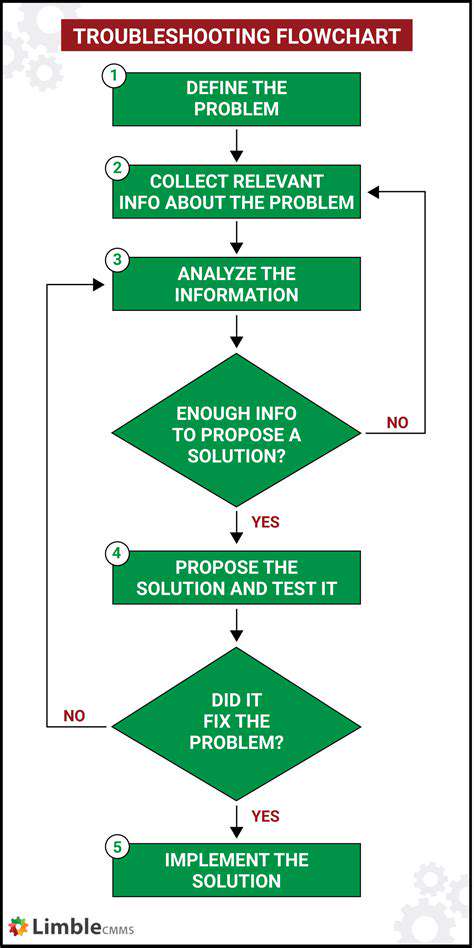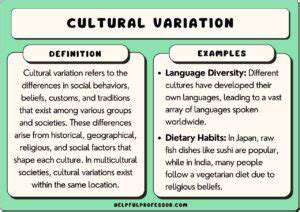The History of Soy Sauce
The Spread Across Asia: Adapting to Different Palates
The Evolution of Soy Sauce in East Asia
Soy sauce's journey through East Asia is a fascinating one, marked by cultural exchange and culinary innovation. From its origins in ancient China, the process of fermenting soybeans and grains gradually spread throughout the region. Each region, with its unique agricultural practices and cultural preferences, adapted the recipe, leading to variations in taste and appearance. This evolution is reflected in the different types of soy sauce prevalent in Japan, Korea, and other East Asian countries, showcasing the remarkable adaptability of this versatile condiment.
Early Chinese methods likely involved simple fermentations, gradually refining techniques over centuries. This early development laid the foundation for the diverse soy sauces we see today, highlighting the profound impact of time and regional influences on the final product.
The Role of Soybeans in Traditional Diets
Soybeans, the cornerstone of soy sauce production, held a significant place in the diets of various East Asian societies long before the widespread use of soy sauce. Their nutritional value and versatility made them a staple food source, used in countless dishes, from soups and stews to stir-fries and even as a meat substitute in some cultures. This established cultural appreciation for soybeans undoubtedly contributed to the development and acceptance of soy sauce as a key ingredient.
Regional Variations in Flavor Profiles
While the fundamental process remains similar, each East Asian country has developed its own unique flavor profiles in soy sauce. Japanese soy sauce, often lighter and sweeter, reflects the island nation's unique culinary traditions. Korean soy sauce, on the other hand, often has a bolder, more savory profile. These differences highlight the intricate interplay between culinary heritage and regional preferences, demonstrating the adaptability of the basic ingredient to diverse tastes.
These variations are not simply about taste; they reflect the local ingredients and techniques used in each region, further enriching the overall experience of consuming soy sauce.
The Impact of Trade Routes on Soy Sauce Diffusion
The extensive trade networks that crisscrossed East Asia played a critical role in the spread of soy sauce. Merchants and travelers carried not only goods but also culinary knowledge, including recipes and techniques for producing soy sauce. This exchange fostered cultural exchange and the adoption of new flavors, leading to the gradual dissemination of soy sauce throughout the region. This highlights the important role of trade in shaping culinary traditions.
The Influence of Imperial Courts and Aristocracy
The imperial courts and the aristocracy often played a significant role in shaping culinary trends throughout East Asia. Soy sauce, as a sophisticated condiment, likely gained prestige through its association with these powerful groups. The development of refined preparation methods and the use of soy sauce in elaborate dishes likely elevated its status and spurred its broader adoption throughout society. This cultural influence is evident in the historical records and culinary practices of the time.
Modern Adaptations and Global Popularity
Soy sauce has transcended its origins in East Asia, becoming a globally recognized ingredient. Modern chefs continue to experiment with soy sauce in innovative ways, from incorporating it into Western cuisine to creating unique flavor combinations. This adaptability and versatility have contributed to the sauce's enduring popularity, demonstrating its ability to adapt to diverse palates and culinary traditions. This widespread adoption showcases the ingredient's enduring appeal.
The Arrival in the West: A New Culinary Frontier

The Genesis of Western Influence
The arrival of the new culture, often referred to as the West, marked a significant turning point in the history of many regions. This wasn't simply a matter of people crossing oceans; it represented a profound shift in power dynamics, trade routes, and societal structures. The exchange of ideas, goods, and technologies was unprecedented, forever altering the course of civilizations. This initial contact, however, was not always peaceful, often leading to conflict and clashes between differing worldviews.
The introduction of Western ideas, philosophies, and institutions brought about a period of both adaptation and resistance. Societies grappled with integrating new concepts into their existing frameworks, while simultaneously defending their own traditions and values. This complex interplay between the old and the new created a dynamic and often turbulent period in history. The consequences of this encounter were far-reaching and continue to resonate in the present day.
The Economic Transformations
The West's arrival triggered significant economic shifts in the regions it encountered. Trade routes were reconfigured, opening up previously isolated markets and introducing new commodities. This led to both economic growth and exploitation, as Western powers often sought to establish advantageous trade relationships that prioritized their own interests.
The introduction of new technologies, such as agricultural implements and manufacturing processes, also had a profound impact on local economies. While some regions benefited from increased productivity and efficiency, others faced economic disruption as traditional industries struggled to compete with the new advancements. The overall result was a complex mix of progress and hardship.
Political and Social Impacts
The arrival of the West brought about significant political and social transformations. The imposition of Western political systems and ideologies often clashed with existing power structures, leading to conflicts and revolutions. This period saw the rise of nationalism and movements for independence and self-determination in many parts of the world. The legacy of these political and social transformations continues to shape international relations today.
The introduction of Western concepts of governance, law, and social structure challenged traditional societal norms and hierarchies. These changes, however, were not always welcomed, and resistance to foreign influence manifested in various forms of social and cultural resistance.
Cultural Exchange and Hybridity
The arrival of the West also led to a significant cultural exchange. Ideas, art, music, and religious beliefs were shared and adapted, creating new hybrid forms of expression. This cultural fusion enriched and diversified many societies, leading to the creation of unique artistic and intellectual traditions.
While some cultures embraced elements of Western culture, others fiercely resisted these influences. This resulted in a dynamic interplay between assimilation and preservation of traditions. The resulting cultural landscape was often a complex mix of old and new, reflecting the multifaceted interactions between different societies. The blending of cultures continues to be a defining characteristic of the modern world.
The Lasting Legacy
The arrival of the West in these regions had a profound and lasting impact on the societies it encountered. The political, economic, and social changes brought about by this interaction continue to reverberate in the present day, shaping international relations and cultural landscapes. Understanding this historical period is crucial for comprehending the complexities of the modern world and the ongoing interactions between different cultures.
The legacy of this encounter is multifaceted, encompassing both positive and negative aspects. The benefits of technological advancements and economic growth must be weighed against the consequences of exploitation and cultural disruption. Examining this complex historical narrative is vital for fostering a deeper understanding of the global community.
Modern Production and Continued Evolution: A Global Condiment

Modern Production Methods
Modern production methods are revolutionizing industries across the globe. These advancements are not just about efficiency; they're about creating more sustainable and resilient supply chains. From automation to advanced materials, the tools available to manufacturers today allow for higher quality output with minimal waste.
Implementing these methods requires significant investment in technology and training. However, the long-term benefits often outweigh the initial costs, leading to increased profitability and market competitiveness. Modern production also emphasizes flexibility and adaptability, allowing companies to quickly respond to changing market demands.
Continuous Improvement Strategies
Continuous improvement is a crucial aspect of modern production. It's not a one-time event but rather an ongoing process of identifying areas for enhancement and implementing changes to optimize workflows, reduce errors, and boost productivity. Implementing these strategies requires a culture of collaboration and a willingness to embrace feedback from all levels of the organization.
Various methodologies, such as Lean Manufacturing and Six Sigma, provide frameworks for achieving continuous improvement. These frameworks help companies systematically analyze processes, identify bottlenecks, and implement corrective actions. This iterative process ultimately leads to significant gains in efficiency and quality.
Evolution of Materials and Technologies
The evolution of materials and technologies plays a pivotal role in driving modern production. New materials offer enhanced strength, durability, and functionality, while cutting-edge technologies like 3D printing and advanced robotics automate complex tasks and allow for greater precision in manufacturing. The constant innovation in materials and technologies empowers manufacturers to create lighter, stronger, and more efficient products.
The development of advanced composites, for example, is transforming industries like aerospace and automotive, leading to significant improvements in performance and fuel efficiency. This constant evolution in materials and technologies is essential for meeting the ever-growing demands of consumers and markets.
Focus on Sustainability and Environmental Impact
Modern production is increasingly focused on sustainability and minimizing its environmental impact. Companies are adopting eco-friendly practices, such as using recycled materials, reducing energy consumption, and implementing waste reduction strategies. This shift towards sustainability not only benefits the environment but also enhances a company's brand image and attracts environmentally conscious consumers.
Implementing sustainable practices often involves significant upfront investment, but the long-term benefits, including reduced operating costs and improved brand reputation, are substantial. Manufacturers are actively seeking innovative solutions to minimize their carbon footprint and operate in a more environmentally responsible manner.
Adapting to Global Market Demands
The global market presents unique challenges and opportunities for modern production. Companies must adapt to diverse cultural preferences, varying regulatory standards, and fluctuating economic conditions. The ability to quickly adapt to global market demands is crucial for success in today's interconnected world.
Globalization has led to increased competition, demanding that manufacturers offer diverse product lines, support localized distribution networks, and navigate complex international trade regulations. By effectively adapting to these demands, companies can tap into new markets and expand their global reach.
Read more about The History of Soy Sauce
Hot Recommendations
- Traditional Foods for Day of the Dead
- Food Etiquette in Italy: Pasta Rules!
- Best Family Friendly Restaurants with Play Areas in [City]
- Review: The Best [Specific Dessert] Place in [City]
- Top Ice Cream Parlors in [City]
- Traditional Foods for Halloween
- The History of the Potato in Ireland
- Best Vegan Pizza Joints in [City] [2025]
- Best Bakeries for Sourdough Bread in [City]
- Food Culture in Argentina: Asado and Wine











